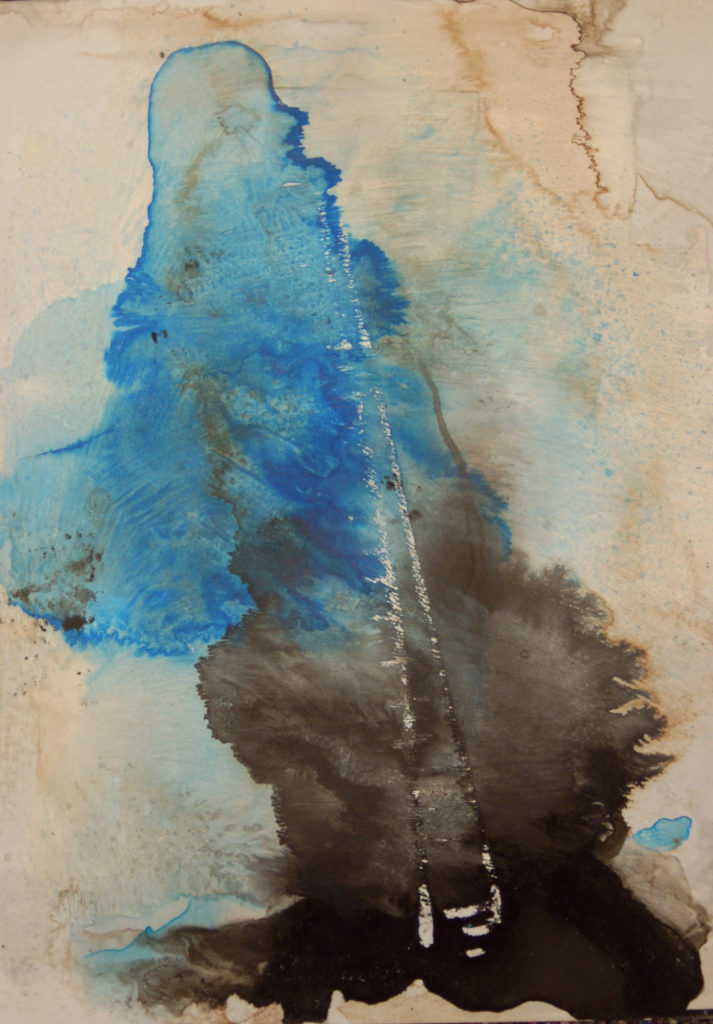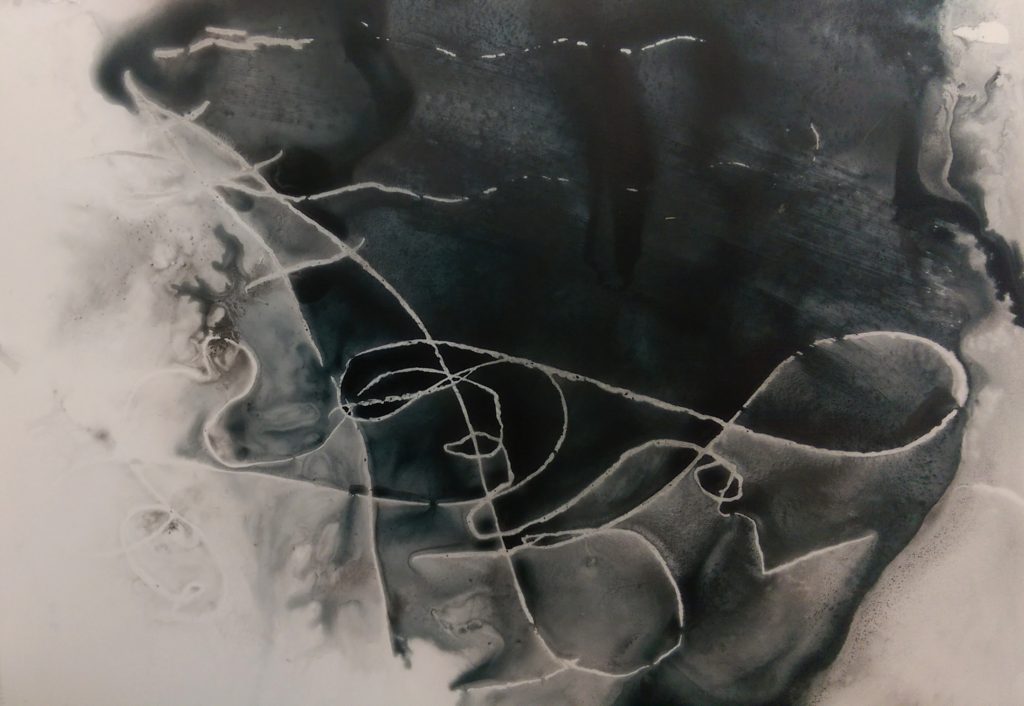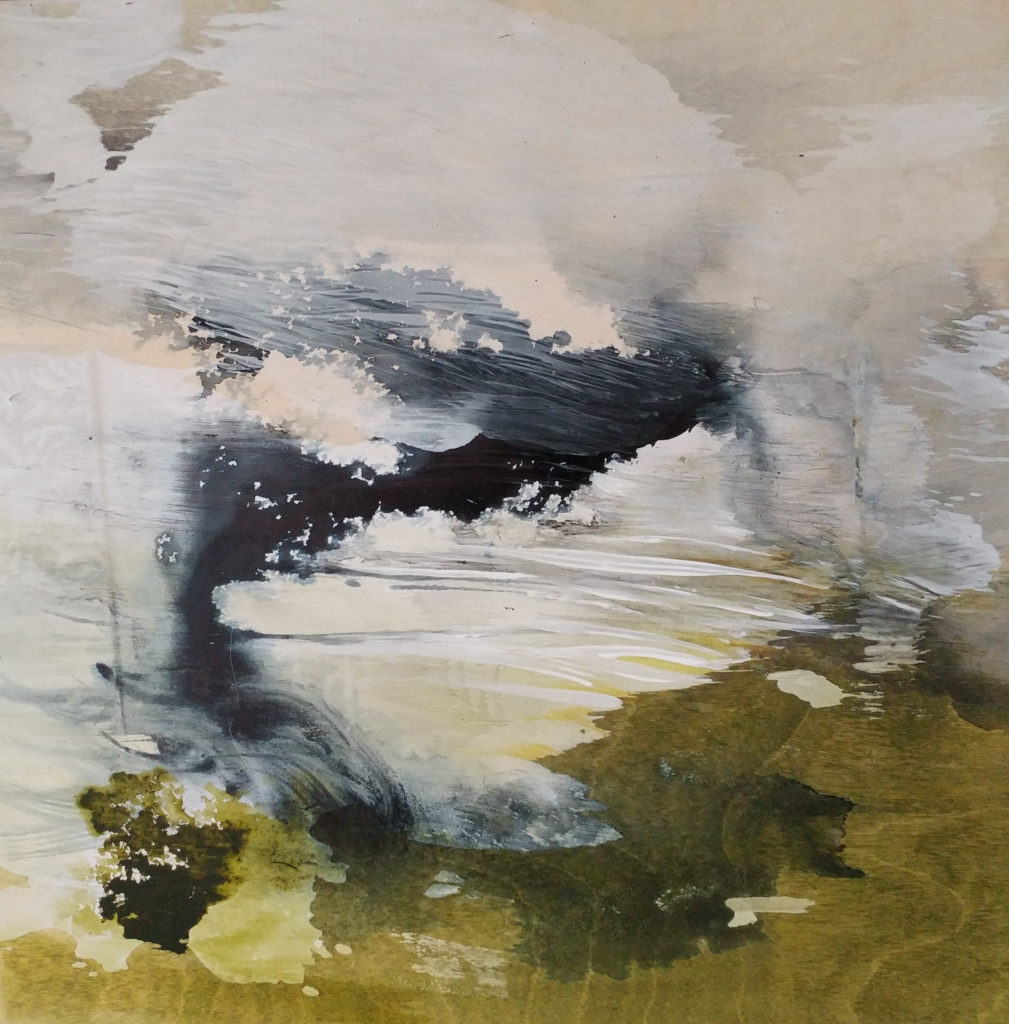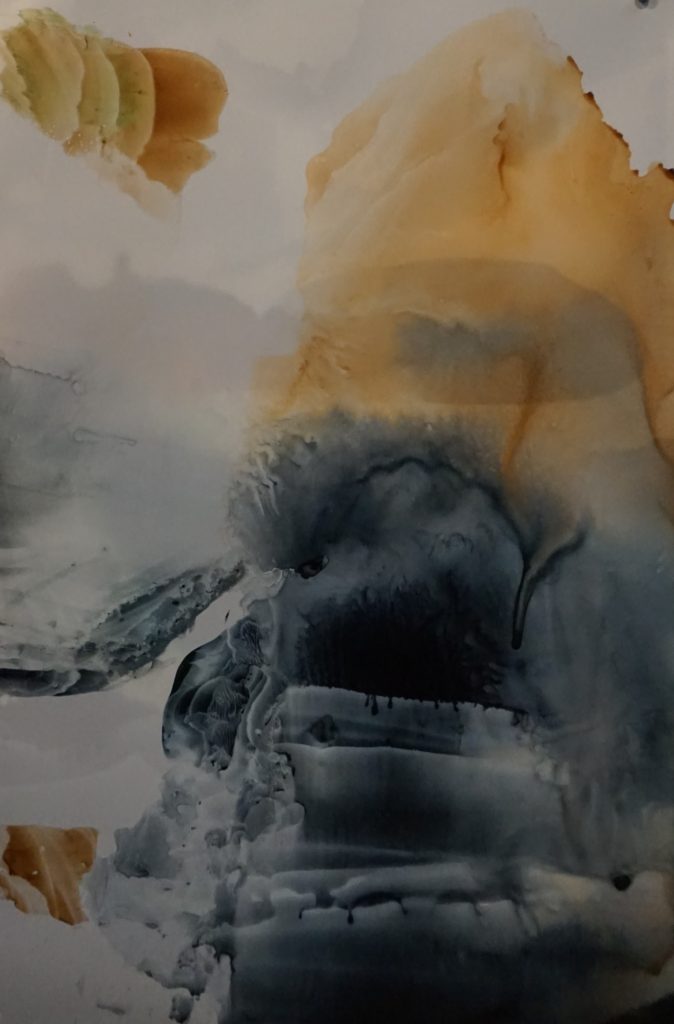“Truth, like beauty, is fleeting and temporary, so I strive to create work that is true at the time of its making but will linger in the viewer’s psyche afterward, resonating in layers of meaning.”
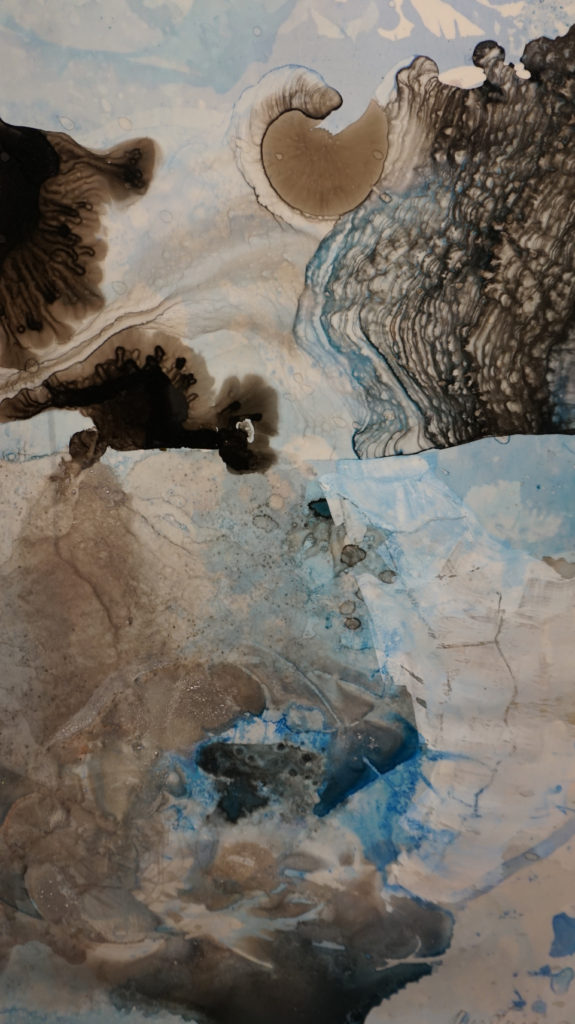 Amie Oliver’s artwork has been exhibited in hundreds of solo and group exhibitions as well as artists’ residencies in the United States, Europe, China, South Korea, Tibet, and Australia. BROAD STREET published two of her paintings in the “Hunt, Gather” issue, alongside Patricia Smith’s essay “Holy War: Ramadan and race riots in Senegal” (now visible online; just click on the title to see Oliver’s paintings along with the text). Most of Oliver’s work consists of drawing and ink wash painting on paper; her subjects show a wide range from the highly representational to the abstract–a fascinating range that we primarily word-fuddled editors wanted to explore.
Amie Oliver’s artwork has been exhibited in hundreds of solo and group exhibitions as well as artists’ residencies in the United States, Europe, China, South Korea, Tibet, and Australia. BROAD STREET published two of her paintings in the “Hunt, Gather” issue, alongside Patricia Smith’s essay “Holy War: Ramadan and race riots in Senegal” (now visible online; just click on the title to see Oliver’s paintings along with the text). Most of Oliver’s work consists of drawing and ink wash painting on paper; her subjects show a wide range from the highly representational to the abstract–a fascinating range that we primarily word-fuddled editors wanted to explore.
****************************
Broad Street: Amie, how do you define “truth” or “honesty” in art—in any medium in which you work?
Oliver: A timely question, as we are living in an era in which “alternative facts” are filling our news feeds.
As the daughter of a tall-tale teller from the Bible Belt, I appreciate whimsy and embellishment, but I’ve witnessed more than enough real-life drama to appreciate the fact that truth is personal—and is no more or less than an abstraction of experience, myth, and legend.
Reality can be nebulous … and as such, fiction and fact are intertwined like the wisteria on our arbor.
Truth, like beauty, is fleeting and temporary, so I strive to create work that is true at the time of its making but will linger in the viewer’s psyche afterward, resonating in layers of meaning.
“Life and death are true. Pain and pleasure are true. Context and weather change everything in between, and embellishment is rarely necessary.”
Your features in Broad Street and on your website show that you paint some works that seem meant to stand alone and some that come in a series. What would you say (if you can say) inspires you to create that first painting, and how do you know it needs some more to follow it?
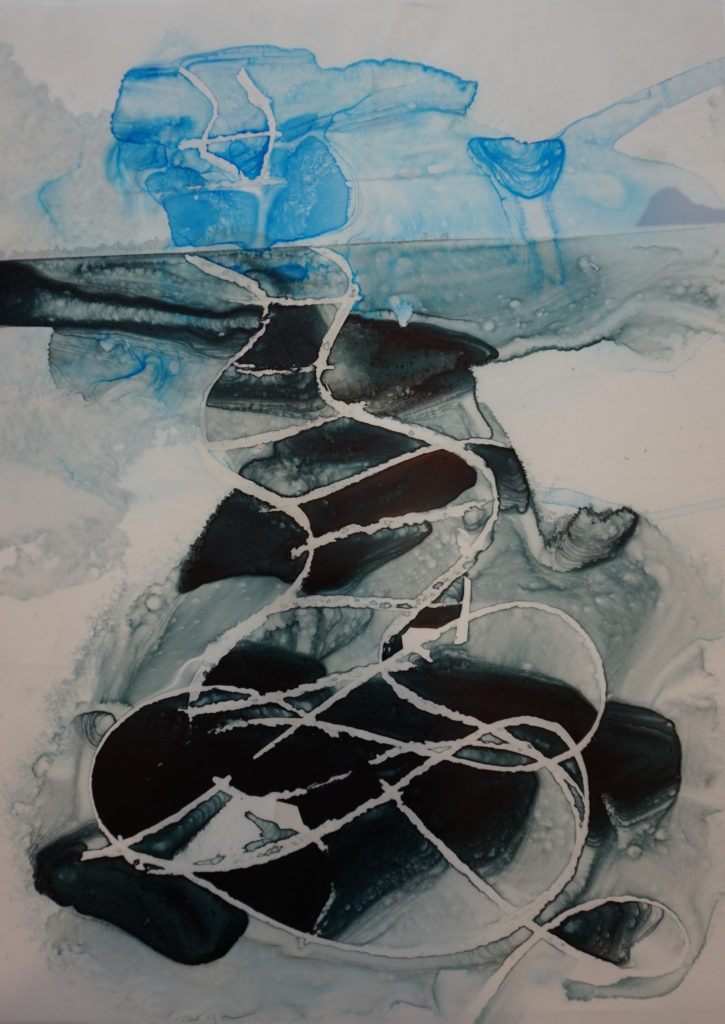 There are times when words, images, and materials flow and follow each other because they need to get where they want to go.
There are times when words, images, and materials flow and follow each other because they need to get where they want to go.
Perhaps it is a search for the divine?
If I could map the divine I’d probably spill coffee on it and look for a more scenic route every time. It’s often a search-and-rescue … or it can be a long, meandering walk.
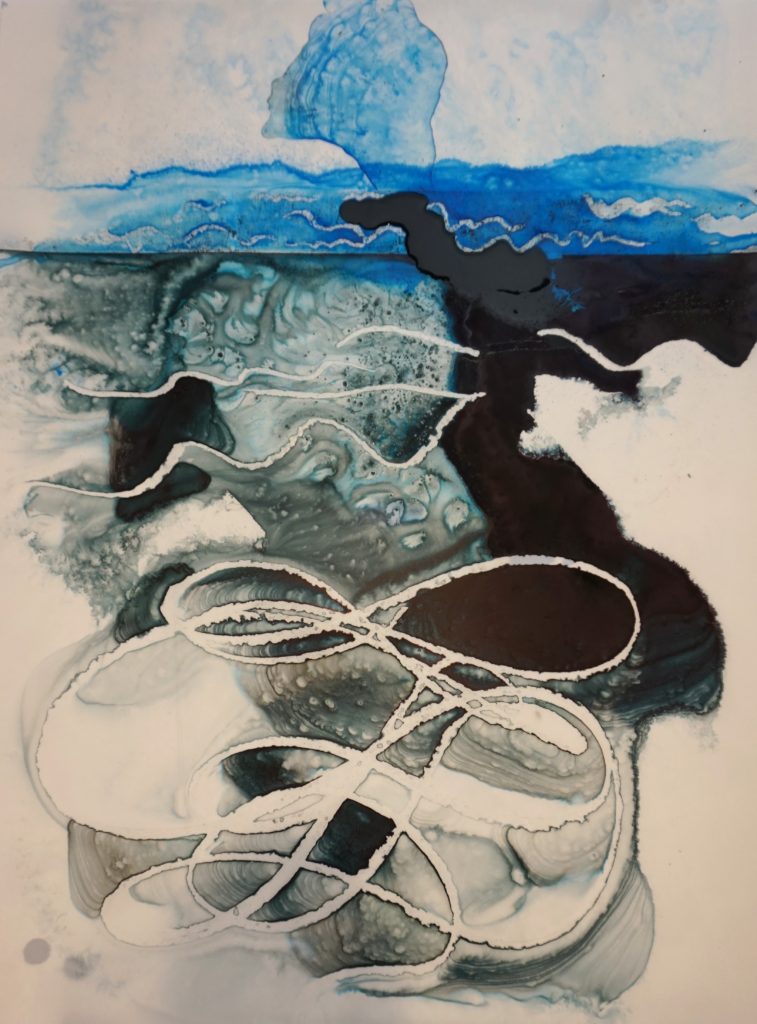 And then—what makes you stick with an idea, a style, a subject, to form a series? Perhaps a better way to ask this question is, How do you define a series of paintings, and how do you know you’ve come to the end of one?
And then—what makes you stick with an idea, a style, a subject, to form a series? Perhaps a better way to ask this question is, How do you define a series of paintings, and how do you know you’ve come to the end of one?
Time and chance are the best judges of beginnings and endings.
I try to listen, look, and be attentive.
Restraint and economy have taught me that too much information can get in the way.
When we are lucky, all the stars are in alignment, our caffeine and blood sugar levels are right, and everything comes together.
One piece informs the next until it doesn’t.
” When it is not obvious that something should happen, I wait, and then sometimes wait some more.”
Even when you’re painting or drawing something imaginary, maybe fantastic—there is often a representational connection to the world viewers recognize. How important is that connection to you, and to what degree do you keep it in mind as you work?
Your question requires me to articulate what is instinctive and visual in a different language, but that is the bridge many artists must cross!
I tell my students that all painting is an abstraction representative of an artist’s vision. It is elusive and not. On a very good day I think of nothing—but am completely present and can see and respond to the tide as it ebbs and flows. On other days I might ponder what work will withstand the ultimate test: time.
“Time and chance are the best judges of beginnings and endings. “
Your work seems to be primarily in watercolor and wash, and the images range from what seems purely abstract to some very recognizable, if blurred, representations of objects such as ladders. I love the range and I wonder how it comes about.
My work was once so personal and representational it was easy to see it as autobiographical. Many young artists use their skill and studio practice to process the great mysteries of love, truth, and an authentic life. Early on, I found that leaving the familiarity of my studio on a regular basis alters and expands my process. Elemental considerations such as heat and drought have a tangible impact on my psyche and the materials I work with. Ink wash and weather patterns have always floated through my journals—but are are now made manifest as larger, public works that exploit the quality of water and its impact on everything. Water is life.
“All painting is an abstraction representative of an artist’s vision.”
Let’s talk about inspiration (the impossible topic) and how the work intertwines with your life. What is the work life of Amie Oliver, Artist, like—and how is it in dialogue with Amie’s personal life?
The motivation to make something can be mysterious and not! Deadlines and life experiences are intertwined.
I lost my sister and both parents quite suddenly and abruptly … within a few years of each other. It was a difficult time, and my work provided salve. There is also solace in the work of great masters. It energizes me to discover something new or old in a familiar work. Such epiphanies continue to simmer in my psyche, as great art tends to do—and inspire me to riff off the work—in my journals and not—sometimes painting over them—often reinterpreting them. It has proven to be a great warm-up and/or re-entry process after an aesthetic journey.
**********************************************************
Most images are from the “Heaven, Earth, and Sea” series, especially “Arcadia Lost.” See more of Oliver’s work by visiting her website.

